Description
ABSTRACT
Examination of a Statutory Squeeze Out Option
Professor Gbolahan Elias*
There are at least six statutory powers pursuant to which majority shareholders in companies can in effect buy minority shareholders out compulsorily. The paper considers one of the powers, enshrined in section 129 of the Investments and Securities Act (ISA) by which one who has recently bought 90% of the shares issued by a company may buy out the remaining 10% on the same terms even where the owners of the remaining 10% do not want to sell. The paper concludes that the squeeze out option in section 129 ISA serves a coherent aim, as one who already owns a company overwhelmingly should be allowed to run it without distraction from an inconsequential minority where the minority can be fully and fairly compensated. The paper also points out improvements that can be made to section 129.
Keywords: Squeeze Out, majority shareholder, minority shareholder, section 129.
INTRODUCTION
One who has recently bought 90% of the shares issued by a company may buy out the remaining 10% on the same terms even where the owners of the remaining 10% do not want to sell. This option to buy is the basic point of section 129 of the Investments and Securities Act (2007) (“the ISA”). Section 129 sets out a procedure for the exercise of the option and pre-conditions for its exercise. Section 129 also takes a position of determining the price at which the option is to be exercised. There are ambiguities and other challenges to interpreting section 129.
Before now, section 129 has received virtually no attention in Nigerian cases and scholarly literature. It is hoped that this paper will redress this. To the best of my knowledge, this is the first scholarly paper devoted to the option by majority shareholders to buy minority shareholders out compulsorily — to “squeeze” them “out” — of a company — using section 129.1 This paper aims to describe section 129 and to address the challenges in interpreting it.
This paper also aims to propose changes to the procedure and preconditions in section 129 as well as to call for a change in the prescription for pricing that is set out in it. The paper has six main sections. The first two will review the pre-conditions and procedure respectively. The third will look closely at the issue of pricing. The fourth and the fifth will compare section 129 to other statutory provisions that create, put or call options for majority shareholders to buy out minority shareholders. The last section will provide a conclusion.
SECTION ONE: PRE-CONDITIONS
The preconditions set out in section 129 relate to matters of entities that are covered, its restrictions to “schemes or contracts”, the exclusion of mandatory tender offers and the relative sizes of the shareholdings in issue.
* D.Phil. BCL (Oxon.), Visiting Professor at Babcock University, Ilishan. I thank Ayo Kadiri for assisting me with the material (in n26, 28 and 30) below and Hannah Onifade on the last three paragraphs of Section One.
- The terms “freeze out” and “squeeze out” have been used interchangeably to describe majority shareholders making minority shareholders irrelevant, whether by buying the minority shareholders out, by outvoting them consistently either on the board or at general meetings, or otherwise. See, e.g., F. Gevurtz, ‘Squeeze-out and Freeze-out in Limited Liability Companies’ (1995) 73(2) Washington University Law Review 497, 498.

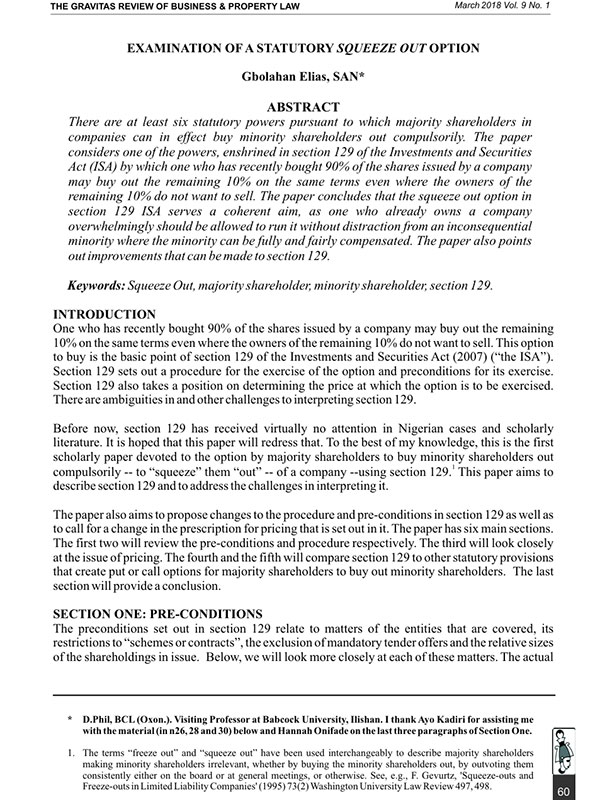
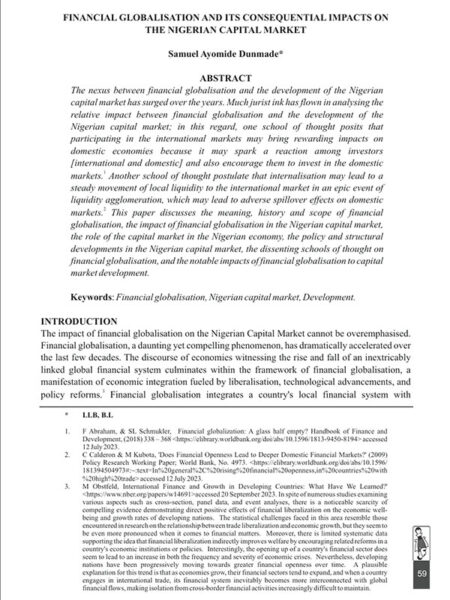
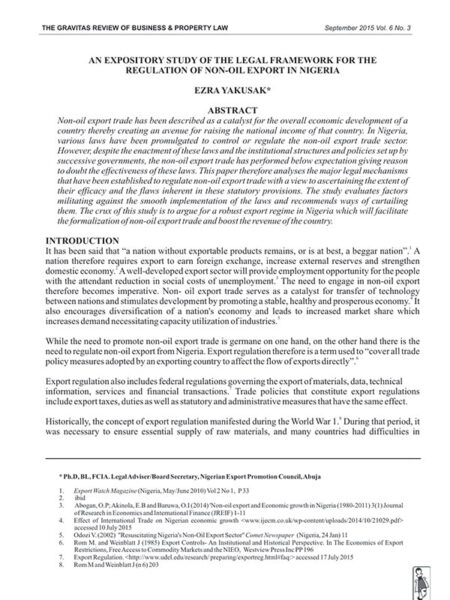
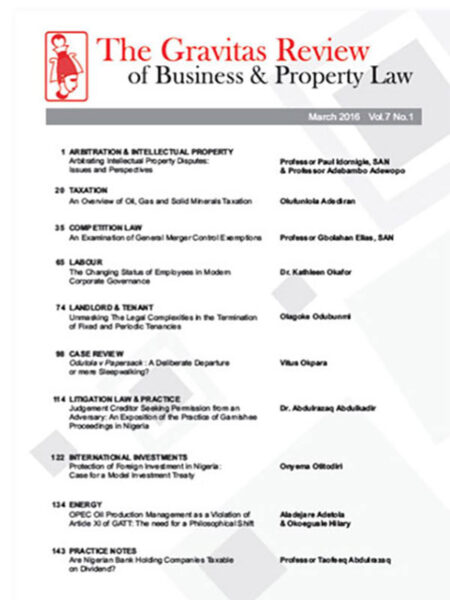
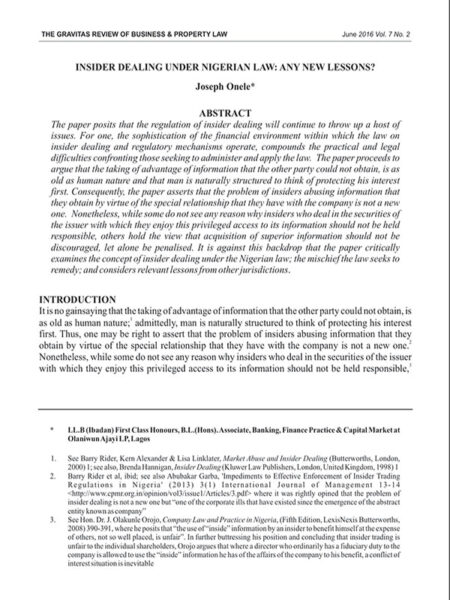
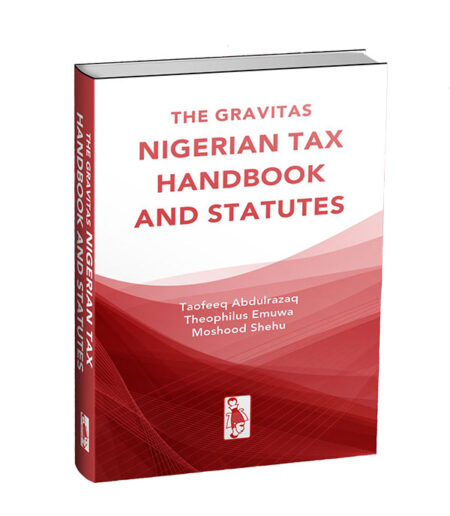
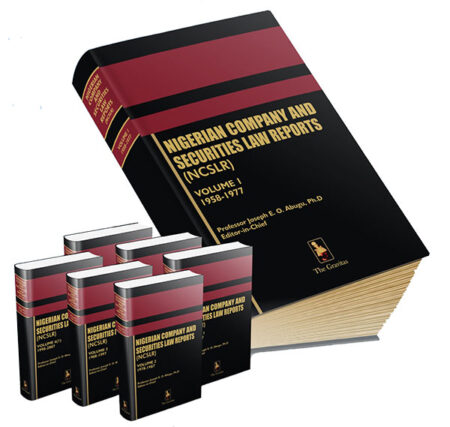
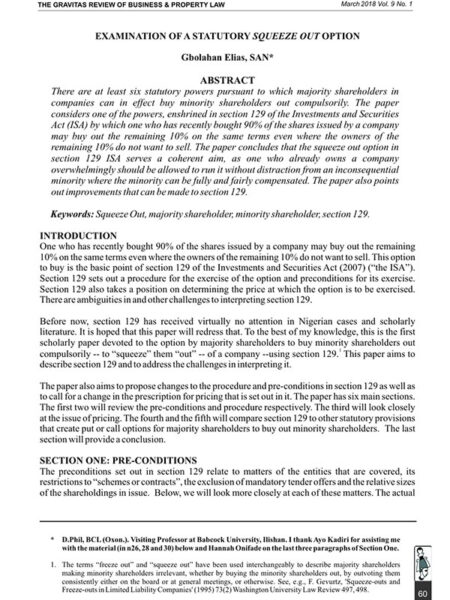
Reviews
There are no reviews yet.